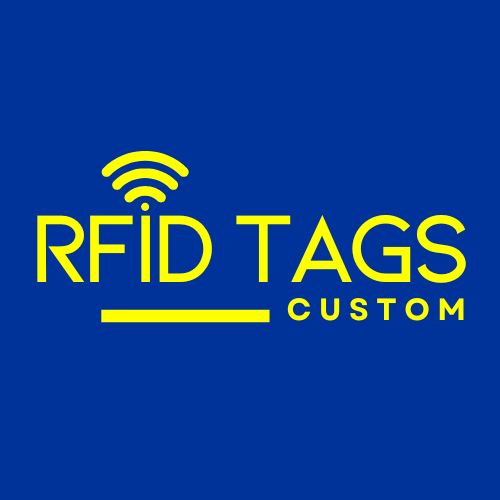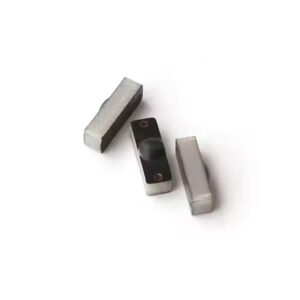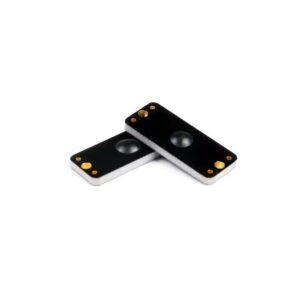RFID for Tool Tracking
RFID tool tracking tags for secure and efficient tool inventory management.
Real-World Use Case: RFID Tool Tracking for Power Tools Management in the Netherlands
In today’s industrial environments—especially in power, utility, and manufacturing sectors—efficient tool management is more than a convenience; it is a necessity. Losing track of critical tools leads to delayed operations, increased costs, and safety risks. This case study illustrates how a Netherlands-based power company tackled these issues by implementing RFID tool tracking tags—specifically 33*10 PCB tags—to manage its electrical tools more intelligently and efficiently.
This real-world deployment showcases the value of RFID for tool tracking, RFID Tool Management, and RFID asset tracking tags, and how they’ve helped digitize and automate traditional systems to achieve cost savings and improve operational safety.
Client Background
The client, a Dutch power utility company, oversees numerous substations and power generation facilities across the Netherlands. The company’s operational teams are responsible for maintaining and deploying hundreds of power tools at various project sites. These tools include torque wrenches, cutters, testing equipment, and calibration instruments.
Before implementing RFID, the company relied on paper logs and spreadsheets to manage tool check-in and check-out, maintenance, and inventory. These outdated methods introduced significant inefficiencies and led to frequent tool misplacements.
Challenges in Tool Management
1. Human Error and Inefficiency
Manual recording led to frequent data inaccuracies. For example, workers sometimes forgot to log borrowed tools or incorrectly recorded tool IDs. This created downstream confusion in tracking, ordering replacements, and managing inventories.
2. No Real-Time Inventory Visibility
Without a digital tool tracking system, the managers had no real-time visibility into tool availability. This caused unnecessary delays when specific tools were needed urgently, but were either in unknown locations or under maintenance.
3. Rising Management Costs
The company experienced increasing costs related to tool loss, duplication of purchases, and unplanned maintenance. Manually managing hundreds of tools across multiple sites became labor-intensive and costly.
4. Safety Compliance Risks
Power tools that were overdue for maintenance were sometimes still in circulation, risking malfunction. The company needed a system that would enforce regular maintenance schedules and compliance.
5. Siloed Data Systems
Each department managed its tools independently, leading to fragmented and inconsistent data. This prevented centralized decision-making and effective cross-departmental resource sharing.
RFID-Powered Solution: Smart Tool Management System
To solve these challenges, the company adopted a comprehensive RFID tool tracking solution using tool tracking tags, smart tool cabinets, and a cloud-based software platform. Each tool was affixed with a 33*10mm RFID PCB tag, which could be read by RFID-enabled smart cabinets and handheld readers.
Implementation Details
RFID Tool Tracking Tags Deployment
Every tool was tagged with an RFID tool tracking tag (33x10mm size), uniquely encoded with tool identification data. These RFID asset tracking tags allowed precise tracking of each item throughout its lifecycle.
Smart Tool Cabinets
Tools were stored in RFID-integrated smart cabinets that automatically detected when a tool was added or removed. These cabinets are connected to a centralized software system via the Internet of Things (IoT), ensuring real-time inventory updates.
RFID Tool Tracking Software
The software tracked each tool’s status—available, borrowed, in repair, or retired—and allowed managers to view tool history, user logs, and maintenance records across multiple job sites.
How the RFID System Works
1. Tool Registration
Before being deployed, every power tool was tagged with an RFID tool tracking tag, scanned, and registered into the system. Relevant attributes such as tool type, serial number, assigned department, and maintenance cycle were recorded.
2. Borrowing and Returning Tools
Employees used ID cards to access the smart cabinet. When a tool was removed, the cabinet’s RFID reader automatically logged the tool as “borrowed.” When returned, the system updated the tool’s status to “available.”
3. Real-Time Inventory
With each tool embedded with RFID asset tracking tags, managers could view real-time inventory data, initiate audits, and generate reports. This eliminated the need for manual stock counts and ensured accurate records.
4. Automated Maintenance Alerts
The system sent automated reminders for tools nearing their maintenance cycle. This ensured tools remained compliant with safety regulations and reduced breakdown incidents.
Application Results
1. Operational Efficiency
By automating inventory and tool tracking, the Netherlands-based power company reduced tool handling time by over 40%. Manual logging was eliminated, and team productivity increased significantly.
2. Accurate Real-Time Data
Through the implementation of RFID for tool tracking, tool status and location were always up-to-date, enabling faster decision-making and resource allocation.
3. Lower Management Costs
Tool loss incidents decreased by 70%. Unnecessary purchases were avoided due to better visibility, and maintenance scheduling improved tool longevity.
4. Improved Safety Compliance
With regular and automated maintenance reminders, tool-related accidents and malfunctions dropped, and compliance with safety protocols improved.
5. Enhanced Cross-Department Collaboration
Thanks to centralized data from the RFID Tool Management system, different departments could share resources effectively and transparently. Data silos were eliminated.
Key Features of the RFID Tool Tracking Tags System
| Feature | Description |
|---|---|
| Tag Type | 33*10mm PCB RFID tool tag |
| Functionality | Unique ID encoding, tool type & status tracking |
| Integration | RFID smart cabinets, cloud platform, handheld scanners |
| Real-Time Monitoring | Instant updates on tool status and location |
| Maintenance Automation | Alerts and records based on usage cycles |
| Reporting | Inventory reports, tool usage analytics, audit trails |
Lessons Learned and Best Practices
Start with a Pilot Program: Before scaling, the client tested RFID tagging in one substation. This allowed them to refine workflows and build internal user confidence.
Train Staff Thoroughly: Proper training helped smooth the transition from manual systems and ensured high adoption rates.
Integrate Maintenance into the System: By including maintenance cycles in the RFID software, tool uptime improved, and safety compliance was better enforced.
Conclusion: A Smarter Way to Manage Tools
This case study from the Netherlands clearly shows how RFID tool tracking tags can transform how organizations manage critical assets. By adopting RFID asset tracking tags, RFID for tool tracking, and RFID tool management solutions, the client significantly reduced inefficiencies, improved safety, and saved costs.
As industrial environments continue to grow in complexity, the need for intelligent asset management becomes even more urgent. RFID technology provides a proven, scalable, and efficient solution for modern enterprises that depend on power tools and high-value equipment.
Ready to upgrade your tool management?
Discover how RFID Tool Tracking can bring real-time visibility, automation, and peace of mind to your operations.
Applications of RFID Tool Tracking
The power industry isn’t alone. Below are other industries where RFID Tool tracking and Tool tracking tags are delivering measurable impact.

Aerospace & Aviation Maintenance
Aircraft maintenance involves thousands of tools, and misplacing even one can halt operations. RFID for tool tracking ensures that every wrench and tester is accounted for in real-time. Smart cabinets at airports and hangars log each tool’s usage history to ensure safety compliance.

Oil & Gas Field Operations
On oil rigs, tools must be available, certified, and traceable. RFID Asset tracking allows remote tool monitoring, even in offshore environments. With harsh conditions and high safety standards, RFID Tool tracking helps ensure readiness and reliability.

Construction and Civil Engineering
Contractors often move tools between sites. Tool tracking tags make it easy to locate tools across multiple job locations. RFID integration into mobile storage units enables automatic updates when tools are checked in or out at a site.

Automotive Manufacturing
In factories, hand tools used for assembly require precise calibration and periodic inspection. RFID for tool tracking maintains an audit trail, ensures tools are used in the correct sequence, and supports ISO certifications. Downtime caused by missing tools is significantly reduced.




